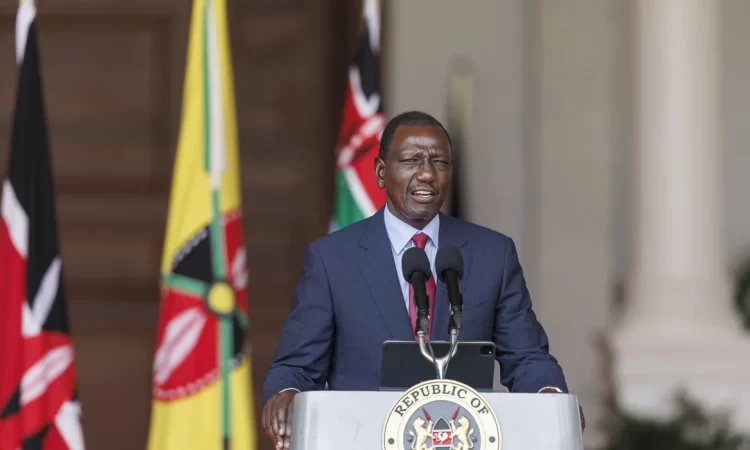
Kenya’s President William Ruto dismissed most of his cabinet after deadly protests against his plan to raise more than $2 billion in new taxes, and signaled that he will pivot to a government that may include members of opposition parties.
Ruto retained his deputy and a senior political appointee, who also handles foreign affairs, the president said in an address to the nation on Thursday. The move comes after he scrapped the plan to levy duties on everything from bread to diapers following protests that left at least 41 people dead. Bureaucrats will run the government until a new government is formed, he said.
With riots wrecking Ruto’s plan to improve state finances and Moody’s Ratings cutting the nation’s credit assessment deeper into junk, the president is seeking to assuage resentment to his leadership with his latest move. He said he will set up a “broad-based government” to help him raise tax collections and reduce debt.
The new administration will implement “radical measures and programs to deal with the burden of debt, to explore raising domestic resources and revenues, expanding job opportunities, eliminating wastage and unnecessary duplication,” Ruto said. It will help in “slaying the dragon of corruption consequently, making the government of Kenya lean, inexpensive, effective and efficient,” he said.
The yield on Kenya’s eurobonds maturing in 2031 fell 12 basis points to 10.35%. That brought the price of the bond up 0.5 cents to 97.5 cents on the dollar at 2:14 p.m. in London. The price for dollar bonds due 2032 and 2048 also advanced.
The shilling dropped as much as 0.3% to the lowest since June 28.
Moody’s reduced Kenya’s rating one level to Caa1 from B3, it said earlier this week. The company doesn’t expect the government to introduce significant revenue-raising measures in the foreseeable future, given heightened social tensions.
The government had planned to introduce new taxes to help raise an additional 346 billion shillings ($2.7 billion) in the fiscal year that began on July 1. Instead, the Treasury will reduce expenditure by 177 billion shillings and borrow the balance.
Kenya’s outlook remains negative, reflecting downside risks related to government liquidity, according to Moody’s.
The last time Kenya had a cabinet comprising members from both the ruling party and the opposition was after a disputed election in 2007 when more than 1,100 people died and 350,000 were forced to flee their homes.
Mwai Kibaki was declared winner of that vote, which was challenged by opposition leader Raila Odinga. Two years before the elections, Kibaki dissoved his cabinet after the government lost a referendum on a proposed new constitution.
–Bloomberg







